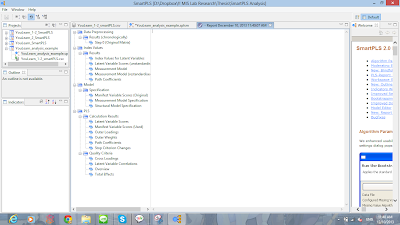'Knowledge' Makhluk seperti itu sebenarnya !!! dan Siapa Legenda Knowledge Management
KNOWLEDGE atau PENGETAHUAN yang berkali-kali kita bicarakan itu sebenarnya “makhluk” apa ?. Pengetahuan itu bisa dibagi menjadi dua (Nonaka 1992, dalam Saide 2015) : |
| Knowledge is Power (sumber: image) |
1.Explicit Knowledge yakni pengetahuan yang tertulis, terarsip, tersebar (cetak maupun elektronik) dan bisa sebagai bahan pembelajaran (reference) untuk orang lain. Ketika seorang member milis memberi solusi dengan menulis di buku, maka sebenarnya itu adalah bentuk explicit knowledge.
2.Tacit Knowledge merupakan pengetahuan yang berbentuk knowhow, pengalaman, skill, pemahaman, maupun rules of thumb. Ketika seorang member milis menjawab berdasarkan pengalaman dia, hasil ngoprek atau tidak disengaja dapat solusi misalnya, itu semua adalah tacit knowledge. Tacit knowledge ini kadang susah kita ungkapkan atau kita tulis.
Contoh lainnya, seorang koki hebat kadang ketika menulis resep masakan, terpaksa menggunakan ungkapan “garam secukupnya” atau “gula secukupnya”. Soalnya memang dia sendiri tidak pernah mengukur berapa gram itu garam dan gula, semua menggunakan know-how dan pengalaman selama sekian tahun memasak. Itulah mengapa Michael Polyani mengatakan bahwa pengetahuan kita jauh lebih banyak daripada yang kita ceritakan.
Contoh lainnya, seorang koki hebat kadang ketika menulis resep masakan, terpaksa menggunakan ungkapan “garam secukupnya” atau “gula secukupnya”. Soalnya memang dia sendiri tidak pernah mengukur berapa gram itu garam dan gula, semua menggunakan know-how dan pengalaman selama sekian tahun memasak. Itulah mengapa Michael Polyani mengatakan bahwa pengetahuan kita jauh lebih banyak daripada yang kita ceritakan.
 |
| Ikujiro Nonaka (sumber: image) |
Mereka selalu gagal dalam percobaan yang dilakukan. Kulit luar roti yang sudah gosong padahal dalamnya masih mentah, pengaturan volume dan suhu yang tidak terformulasi, adalah pemandangan sehari-hari dari percobaan yang dilakukan. Adalah seorang pengembang software matsushita electric bernama Ikuko Tanaka yang akhirnya mempunyai ide cemerlang untuk pergi magang langsung ke pembuat roti ternama di Osaka International Hotel. Dia dibimbing langsung oleh sang pembuat roti ternama tersebut untuk belajar bagaimana mengembangkan adonan dan teknik khusus lainnya.
Ikujiro Nonaka (1998) dalam Saide (2015), membuat formulasi yang terkenal dengan sebutan SECI Model atau Knowledge Spiral. Konsepnya adalah sebagai berikut: dalam siklus perjalanan kehidupan kita, pengetahuan itu mengalami proses yang kalau digambarkan berbentuk spiral, proses itu disebut dengan Socialization - Externalization Combination - Internalization.
1. Proses eksternalisasi (externalization), yaitu mengubah tacit knowledge yang kita miliki menjadi explicit knowledge. Bisa dengan menuliskan know-how dan pengalaman yang kita dapatkan dalam bentuk tulisan artikel atau bahkan buku apabila perlu. Dan tulisan tulisan tersebut akan sangat bermanfaat bagi orang lain yang sedang memerlukannya.
2. Proses kombinasi (combination), yaitu memanfaatkan explicit knowledge yang ada untuk kita implementasikan menjadi explicit knowledge lain. Proses ini sangat berguna untuk meningkatkan skill dan produktivitas diri sendiri. Kita bisa menghubungkan dan mengkombinasikan explicit knowledge yang ada menjadi explicit knowledge baru yang lebih bermanfaat.
 |
| SECI Model atau Knowledge Spiral (Nonaka, 1992) sumber: http://www.sciencedirect.com/science/article/pii/S1877050915036315 (author: Saide, Mahendrwathi) |
3. Proses internalisasi (internalization), yakni mengubah explicit knowledge sebagai inspirasi datangnya tacit knowledge. Dari keempat proses yang ada, mungkin hanya inilah yang telah kita lakukan. Bahasa lainnya adalah learning by doing. Dengan referensi dari manual dan buku yang ada, saya mulai bekerja, dan saya menemukan pengalaman baru, pemahaman baru dan know-how baru yang mungkin tidak saya dapatkan dari buku tersebut.
4. Proses sosialisasi (socialization), yakni mengubah tacit knowledge ke tacit knowledge lain. Ini adalah hal yang juga terkadang sering kita lupakan. Kita tidak manfaatkan keberadaan kita pada suatu pekerjaan untuk belajar dari orang lain, yang mungkin lebih berpengalaman. Proses ini membuat pengetahuan kita terasah dan juga penting untuk peningkatan diri sendiri. Yang tentu saja ini nanti akan berputar pada proses pertama yaitu eksternalisasi. Semakin sukses kita menjalani proses perolehan tacit knowledge baru, semakin banyak explicit knowledge yang
berhasil kita produksi pada proses eksternalisasi.
References:
1. Saide & Mehendrawathi(2015). Knowledge Management Support For Enterprise Resource Planning
Implementation. Procedia - Procedia Computer Science, 00, 1–8.
http://doi.org/10.1016/j.procs.2015.12.170.
2. Saide & Rozanda, N. E. (2013). Analisis kebutuhan manajemen pengetahuan pada perusahaan
perbankan 1, 343–351.
3. Nonaka I & Konno N. The Concept of BA: Building A Fondat ion for Knowledge Creation. California Management Review. pp. 40-55. 1998.
4. Takeuchi, H. (2005). The New Dynamism of the Knowledge-Creating Company, 1–10.
5. Nonaka, Ikujiro, and Hirotaka Takeuchi. 1995. The Knowledge-Creating Company: How Japanese Companies Create the Dynamics of Innovation. Oxford University Press




















.png)
.png)
.png)
.png)













.jpg)







0 komentar:
Post a Comment